Critical forehand surfing in a wave pool… and beyond
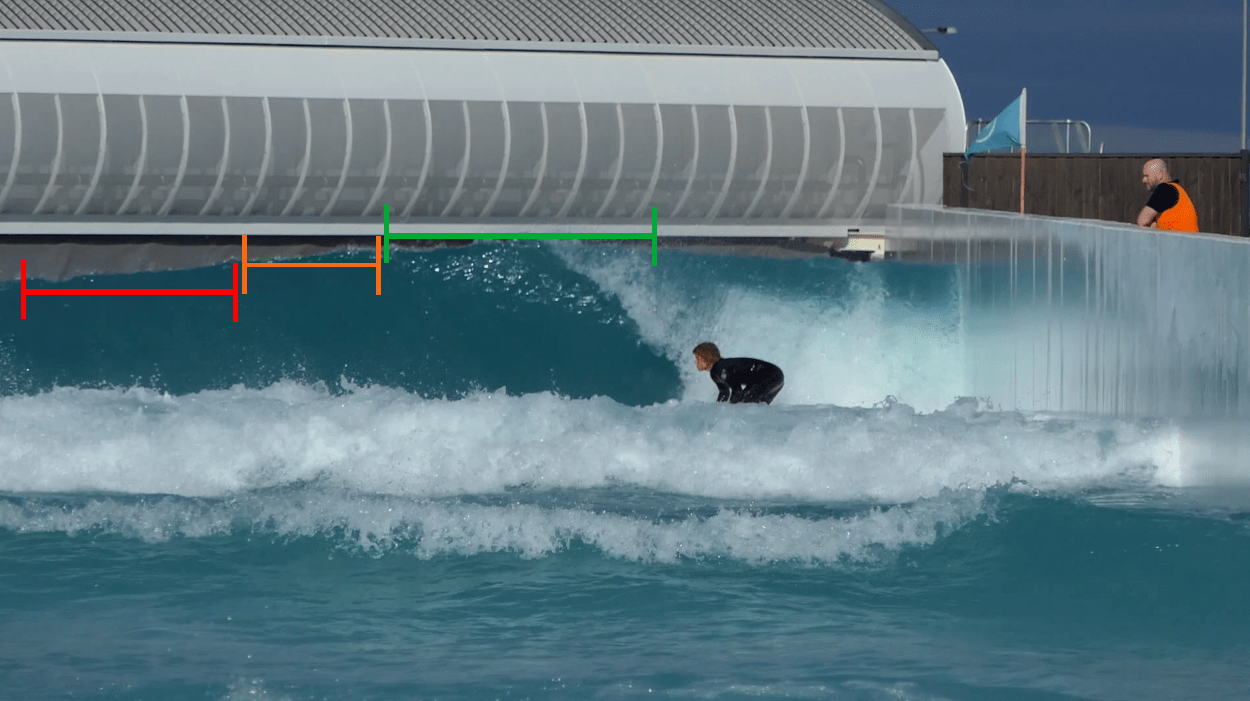
Surf Coach Cahill Bell-Warren shares expert advice about how to improve your forehand surfing. This article is part of our partnership with the Surf Better Now group and Surfing Victoria…
The Rumble At The Ranch WSL event was such a long overdue reminder of what CT level surfing looks like; high end elite performances.
What separates the worlds best and the mere mortals? It isn’t simply equipment, or strength. It’s not decades of experience either… Caroline Marks is only 18 years old.
There are a few key points of separation, but one that was highlighted by the small field at the Ranch was the unwavering commitment to the most critical section of the wave, anything less was unacceptable. The best surfers always target the most critical section, getting their board above the lip where possible.
This critical approach is rewarded by the judging panel also, with any work done out of the pocket crucified in score lines.
Core surfers understand this, immediately seeing through the facade of ‘pretend’ critical surfing. Don’t think you can see the difference? Do let out a ‘whooooaaaahh’ groan from deep in their soul when someone lets rip with true intent? If so, then yeah, you get it.
We recently delivered you an extended breakdown on Tightening the Backhand at URBNSURF, so this post will focus specifically on the Forehand.
From this point on this blog includes screenshots from the Critical Forehand Surfing VLOG available in both Natural and Goofy versions in the Member section of the website. The VLOG features Cahill Bell-Warren breaking down the elements of Critical Forehand Surfing, using developing juniors alongside Xavier Huxtable as a comparison. If you are not yet a member you can sign up here sign up here.
As highlighted in Tightening the Backhand; What is the critical area of the wave?
This is the pocket, lip line, or close to the breaking part of the wave. This is the fastest moving, most risky part of the wave, it is also the most rewarding area to turn in for both personal sensation and speed outcomes on exit.
In the below image.
Green = The critical section.
Orange = The shoulder.
Red = The open face.
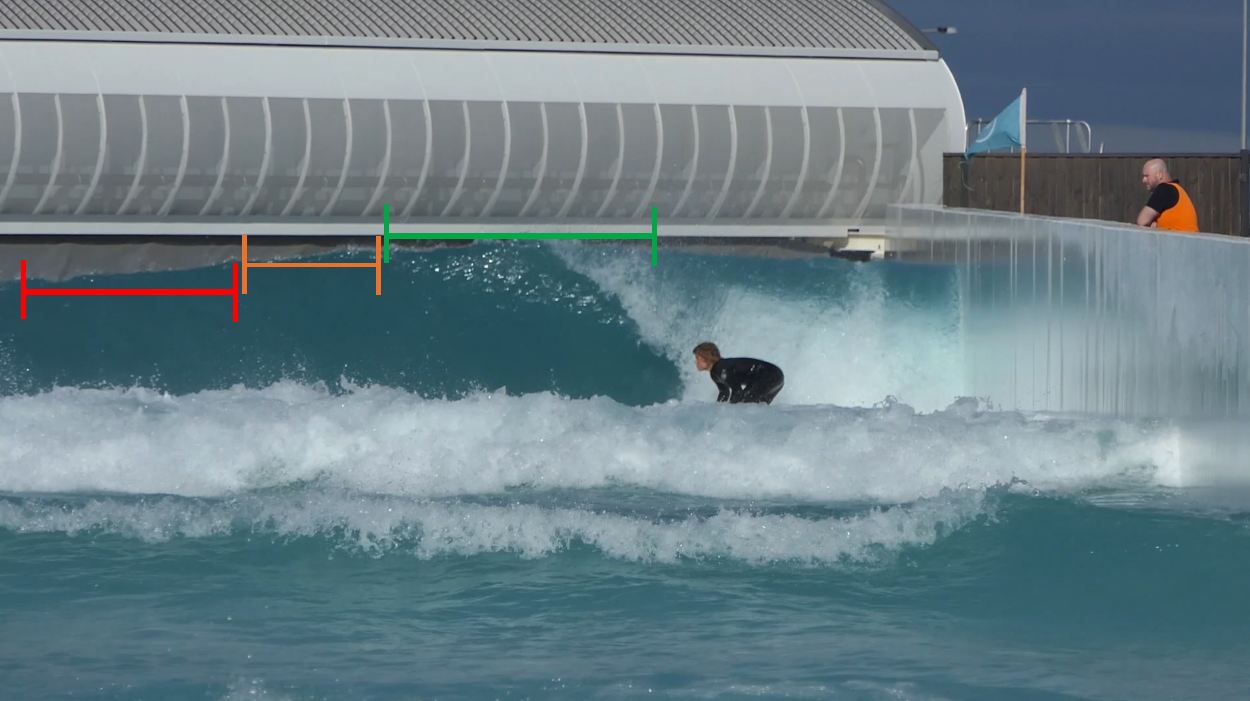
Put simply, a surfer can’t be doing tight or critical surfing on the forehand if they are out on the face or on the shoulder. These critical areas should be targeted with a committed bottom turn starting close to, or behind the whitewater. With the close proximity of the wall on takeoff not allowing a surfer to drive from behind the opening section, to perform a tight and critical manoeuvre at the start of a ride Wave Entry at URBNSURF is everything.
The Forehand Bottom Turn is the gatekeeper to critical forehand surfing, there is no escaping this. Committing to the key components of the bottom turn in unison will provide the surfer the best platform to target up into the critical section.
The key focus is where we look, is where we go. If a surfer isn’t looking to the critical section, they will not turn there.
The below comparisons are between developing junior surfers and Xavier Huxtable in a two turn combination. For Xav, this combination is a critical hip wrap into a vertical re-entry.
Turn one. Eyes to the open face in the bottom turn.
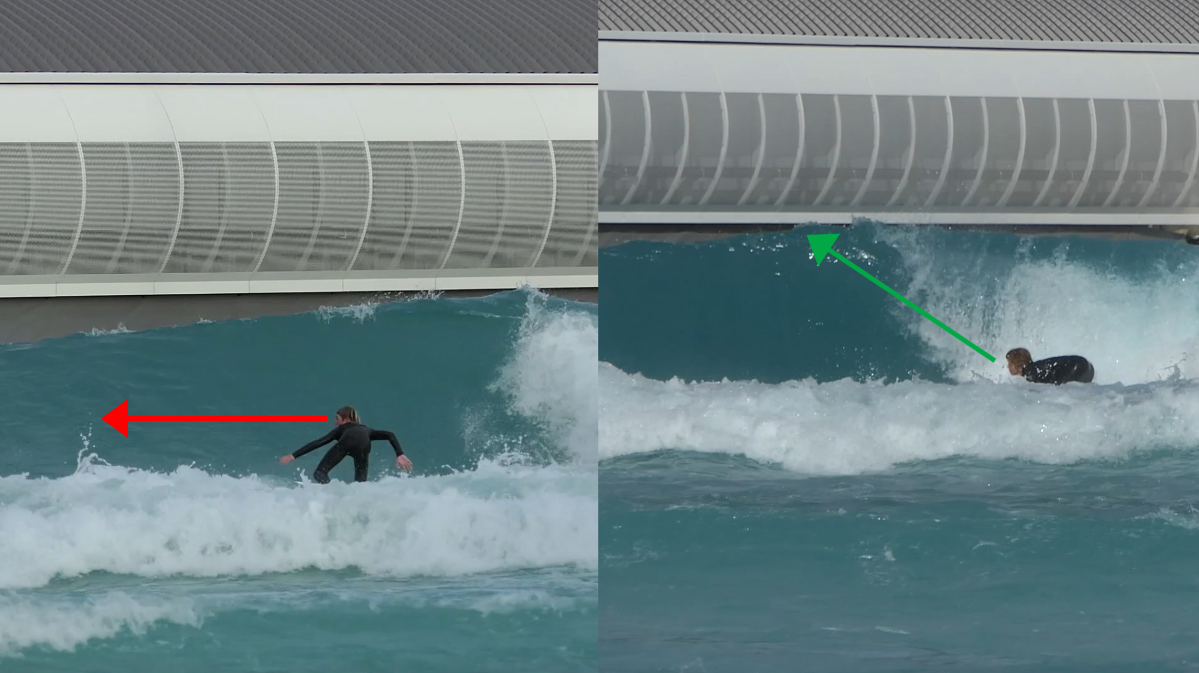
Turn 1 outcome = Cutback on the open face.
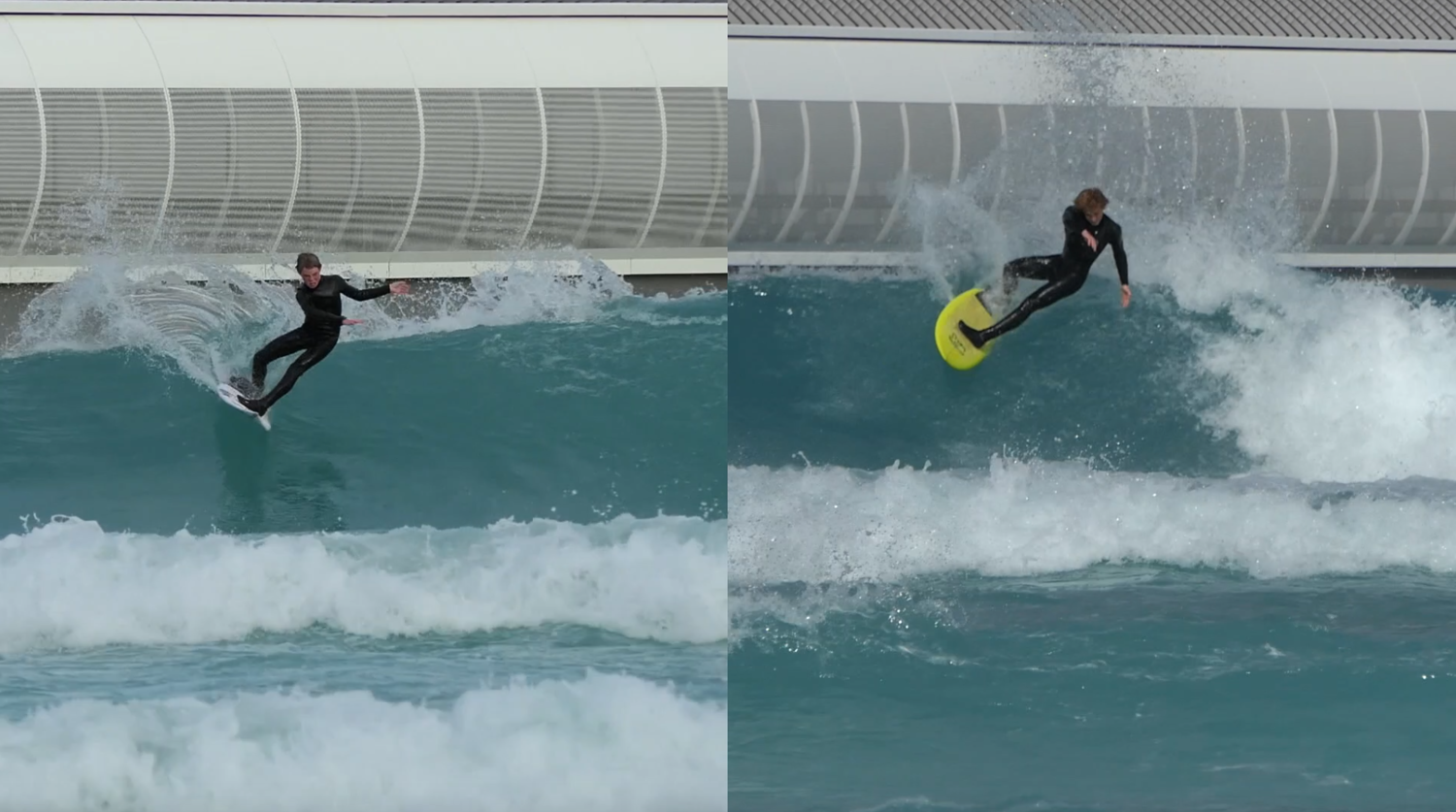
Turn 2. Eyes to the open face.

Turn 2 outcome. Lateral snap on the shoulder.
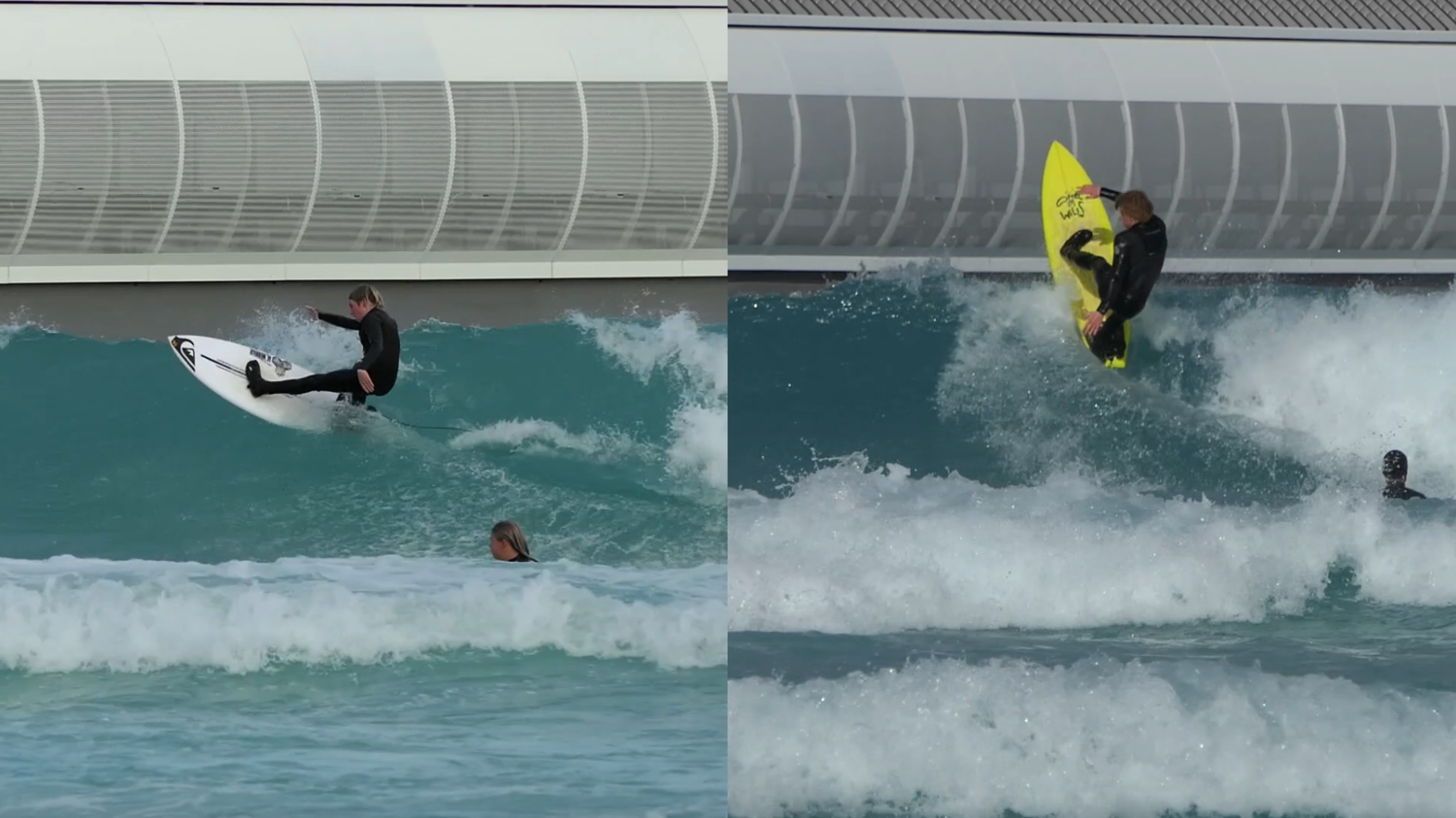
Intent to target the critical section is all in the eyes. In the next comparisons, the surfer is looking tighter to the critical area, the shoulder, and as a result the turns are of higher quality and commitment.
Turn one. Eyes to the shoulder in the bottom turn.

Turn 1 outcome = Carve on the shoulder.
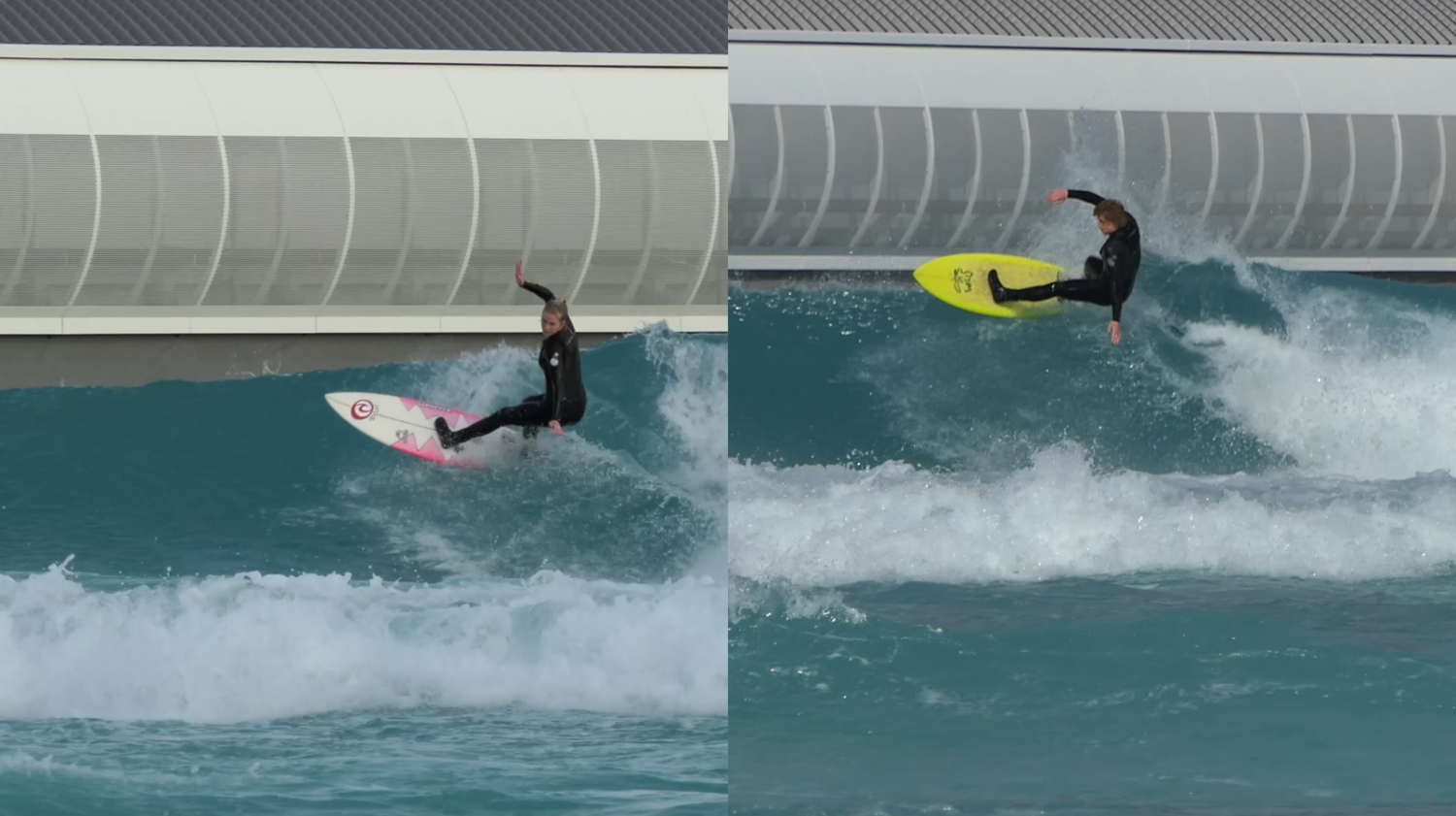
Turn 2. Eyes to shoulder.
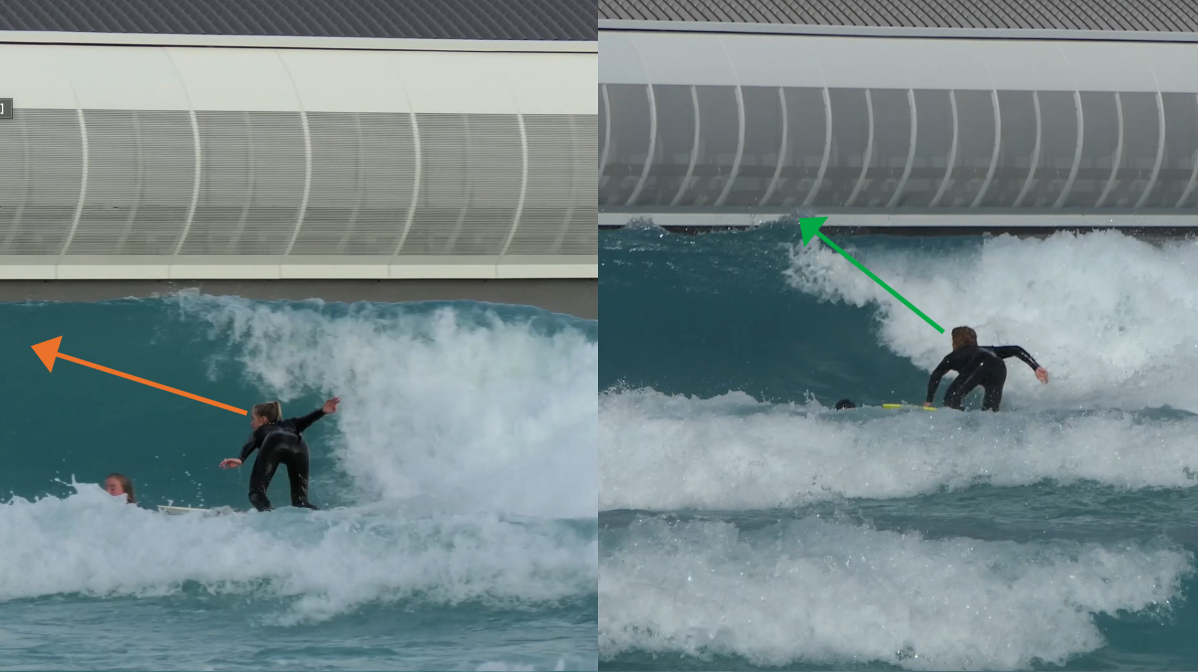
Turn 2 outcome. Board above lip Re-Entry.
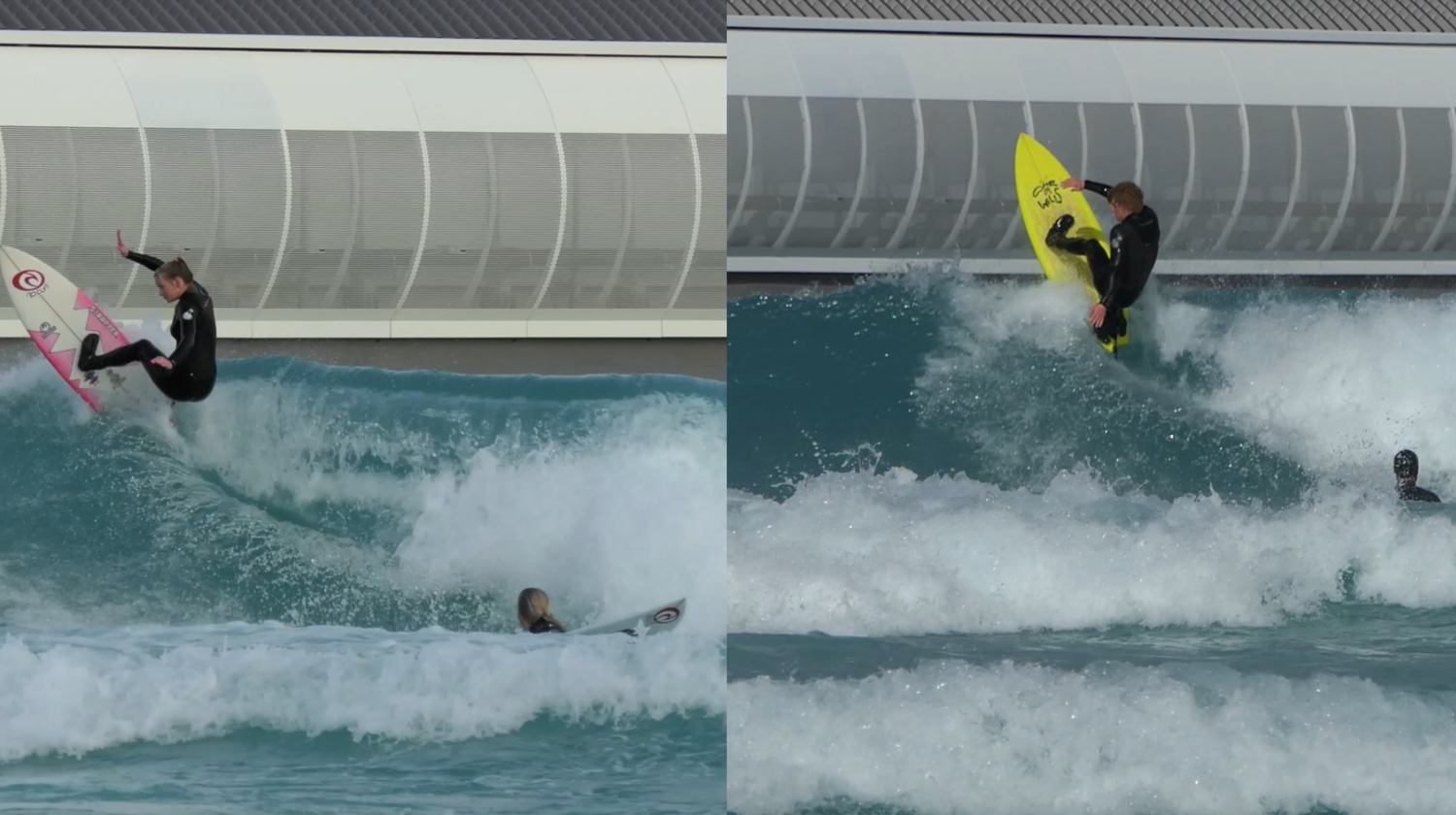
So what does this all mean for me?
Committing to a quality bottom turn is one thing, but the most important factor in targeting the critical section is to look there. The eyes lead the way.
Both surfers in the comparisons with Xavier have the capability and skillset to perform quality hip carves and re-entrys, however their development and scoring capacity is limited by where on the face they are choosing to perform their manoeuvres.
This is all explained in a 9 minute video titled Critical Forehand Surfing VLOG, which is available in both Natural and Goofy versions in the Member section of the website. The VLOG features Cahill Bell-Warren breaking down the elements of Critical Forehand Surfing, using developing juniors alongside Xavier Huxtable as a comparison. If you are not yet a member you can sign up here sign up here.
Related Coverage
